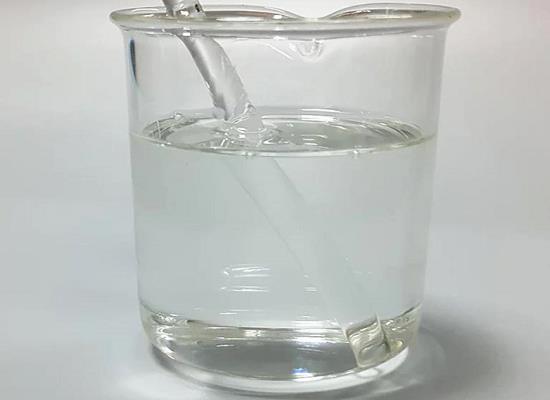Ethylhexylglycerin: A Reliable Ingredient Enhancing Cosmetic Products
Dec 28,2023
General Description
Ethylhexylglycerin is a crystal-clear, colorless glycerol monoalkylether with low solubility in water, but readily dissolves in common cosmetic alcohols, glycols, and oils. It is stable, resistant to hydrolysis and high temperatures, and has obtained global regulatory approvals for use in cosmetic products. Ethylhexylglycerin finds applications as a surfactant, preservative, skin conditioning agent, moisturizer, lubricant, scalp cleanser, and stabilizing agent. It is generally considered safe and non-irritant, widely used in baby products or cosmetics marketed as "hypoallergenic" or "formaldehyde-free." While some reports suggest rare mild skin irritation and dermatitis, toxicity studies have shown no significant toxic effects except for increased salivation at high doses. Overall, Ethylhexylglycerin is a versatile and reliable ingredient contributing to the effectiveness and longevity of various personal care products.

Figure 1. Ethylhexylglycerin
Properties and Regulatory Approvals
Ethylhexylglycerin is a high-purity glycerol monoalkylether with a defined structure. It is characterized by its crystal-clear, colorless appearance and slightly distinctive odor, making it ideal for use in cosmetic products. While it has low solubility in water (less than 0.1% at 25°C), it readily dissolves in common cosmetic alcohols, glycols, and oils. One of the notable properties of Ethylhexylglycerin is its stability, as it is resistant to hydrolysis and high temperatures. This makes it compatible with various cosmetic ingredients, allowing for versatile formulations. Ethylhexylglycerin has obtained global approvals and complies with European legislation listed on the ELINCS file. It is recognized under the INCl name Ethylhexylglycerin in Europe and the USA. In Australia, it is listed on AICS/NICNAS(NA/966) and TGA. In Canada, it is included in DSL. In Japan, it is registered as glycerin monoalkyl (or alkenyl, C8-C24) ether under ENCS (No.: 2-414) and CLS 199. These properties and regulatory approvals highlight the suitability and reliability of Ethylhexylglycerin for use in cosmetic products across different regions. 1
Applications in cosmetic
Ethylhexylglycerin is widely used in the cosmetic industry for its versatile functions and benefits. As a surfactant, preservative, and skin conditioning agent, it finds applications in various cosmetic, skin care, and hair care products. In skin care, Ethylhexylglycerin acts as a moisturizer and lubricant, effectively hydrating and softening the skin. It also helps attract and retain moisture in the upper layers of the skin, providing deeper hydration and improving overall skin condition. In hair care, Ethylhexylglycerin serves as a conditioning agent and scalp cleanser. It not only nourishes and conditions the hair, but also acts as a preservative, inhibiting bacterial growth in hair care formulations. This preservation property extends the shelf life of hair care products. In cosmetic products, Ethylhexylglycerin plays a crucial role in stabilizing formulations. By keeping the ingredients blended together, it prevents separation or degradation of the product, ensuring a longer lifespan for cosmetic products. With its multiple functions and beneficial properties, Ethylhexylglycerin has become a popular ingredient in the cosmetic industry, contributing to the effectiveness and longevity of various personal care products. 2
Safety
Ethylhexylglycerin is a commonly used topical skincare ingredient that is generally considered safe and non-irritant. With an EWG score of 1 and a GOOD rating from Paula’s Choice, it has been deemed very safe for use. It is often used as a deodorizing agent and conditioning ointment in the treatment of eczema, and can also act as a preservative-enhancer and substituent for parabens in cosmetic products. It is widely used in baby products or cosmetics marketed as “hypoallergenic” or “formaldehyde-free”. While some reports suggest that ethylhexylglycerin can cause skin irritation and dermatitis, these reactions are rare and generally mild. Toxicity studies have shown that oral ingestion of ethylhexylglycerin at high doses did not result in any significant toxic effects except for the development of increased salivation, which is a relatively minor symptom. Overall, based on current knowledge, ethylhexylglycerin appears to be a safe and effective ingredient for use in topical skincare and cosmetic products. 3
Reference
1. Ethylhexylglycerin. National Center for Biotechnology Information (2023). PubChem Compound Summary for CID 9859093.
2. Cosmetics Ingredients: ETHYLHEXYLGLYCERIN. SpecialChem, CAS Number: 70445-33-9.
3. Aerts O, Verhulst L, Goossens A. Ethylhexylglycerin: a low-risk, but highly relevant, sensitizer in 'hypo-allergenic' cosmetics. Contact Dermatitis. 2016 May;74(5):281-288.
- Related articles
- Related Qustion
- Is it safe to use Ethylhexylglycerin Jul 3, 2024
Ethylhexylglycerin is not safe due to its performance as a contact allergen.
- Learn More About Ethylhexylglycerin Nov 24, 2022
The passage introduces Ethylhexylglycerin in skin care and preservative.
- The performance and synthesis method of ethylhexylglycerin Jan 13, 2022
Ethylhexylglycerin is a relatively new cosmetic ingredient that is used for its surfactant, emollient, skin-conditioning and antimicrobial properties.
Risdiplam was approved by the USFDA for the treatment of spinal muscular atrophy caused by a mutation leading to a deficiency in the survival motor neuron (SMN) protein.....
Dec 28,2023Biochemical EngineeringThe synthesis of Avapritinib occurs in two steps and requires the involvement of the intermediate Avapritinib Amine Salt.....
Dec 28,2023InhibitorsEthylhexylglycerin
70445-33-9You may like
Ethylhexylglycerin manufacturers
- 3-[2-(Ethylhexyl)oxyl]-1,2-propandiol
-
![70445-33-9 3-[2-(Ethylhexyl)oxyl]-1,2-propandiol](/ProductImageEN1/2025-04/Small/980f614d-ded9-4ecb-bdad-aff213ecce4b.gif)
- 2025-10-26
- CAS:70445-33-9
- Min. Order:
- Purity: 0.99
- Supply Ability:
- Ethylhexylglycerin
-

- $0.00 / 5g
- 2025-10-25
- CAS:70445-33-9
- Min. Order: 1g
- Purity: 99%
- Supply Ability: 100000000t
- 3-[2-(Ethylhexyl)oxyl]-1,2-propandiol
-
![70445-33-9 3-[2-(Ethylhexyl)oxyl]-1,2-propandiol](/ProductImageEN1/2025-04/Small/e1b7a4d2-b74f-4273-9b23-43e6d9413a94.jpg)
- $12.00 / 200kg
- 2025-10-24
- CAS:70445-33-9
- Min. Order: 1kg
- Purity: 99%
- Supply Ability: 500mt






